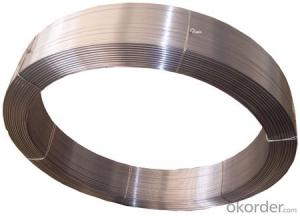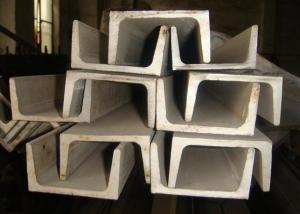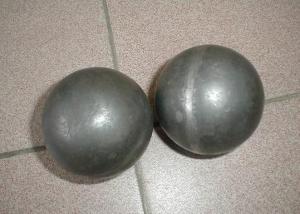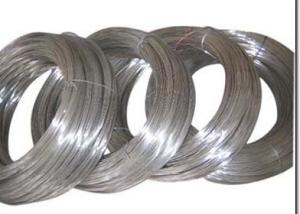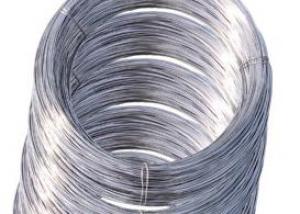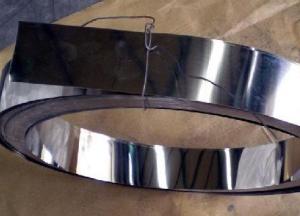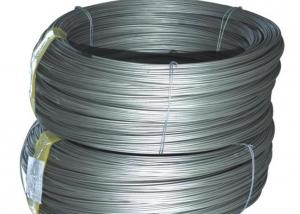Rebar Coil Wire Rod 5.5mm-14mm for Building Structure
- Loading Port:
- Tianjin
- Payment Terms:
- TT or LC
- Min Order Qty:
- 100 m.t.
- Supply Capability:
- 1000 m.t./month
OKorder Service Pledge
OKorder Financial Service
You Might Also Like
Rebar Coil Wire Rod 5.5mm-14mm for Building Structure
Main Structure of Rebar Coil Wire Rod
Standard: AISI, ASTM, BS, DIN, GB
Grade: HRB400
Diameter: 5.5mm-10mm
steel grade: hrb400 , hrb500, gr.60 , hrb335,q235 q255 q275
weight: 1.6-1.9ton /coil
packing: by coil with steel wire
application: building construction
Description for Rebar Coil Wire Rod
Type | rebar coil wire rod |
Steel Grade | Hrb400 , hrb500, gr.60 ,q235 ,q255,q275,sae1006,sae1008 |
Your required chemical composition. | |
Size | 5.5mm-10mm |
Unit weight | 1.6-1.9tons/coil |
Application | Building/project construction |
Packing | In coil with steel strip ,in bulk . |
MOQ | 1000tons(500for trial order ). |
Delivery Time | 25days . |
Payment | T/T , West Union , Cash , L/C. |
Trade Terms | FOB, CFR, CIF ,EXW |
Trans terms | FIO FILO FLT |
Loading port | Caofeidian /Jingtang/Tianjin,China |
Data of Chemical Composition for Wire Rod
Content | C% | Mn% | Si% | Cr% | Ni% | S% | P% | Cr% |
HRB400 | 0.14-0.22 | 0.40-0.65 | 0.05-0.15 | 0.30max | 0.30max | 0.050 | 0.040 | 0.30min |
HRB400E | 0.14-0.22 | 0.40-0.65 | 0.15-0.30 | 0.30max | 0.30max | 0.050 | 0.040 | 0.30min |
HRB500 | 0.28-0.37 | 0.50-1.00 | 0.05-0.15 | 0.30max | 0.30max | 0.050 | 0.040 | 0.30min |
HRB500E | 0.28-0.37 | 0.50-1.00 | 0.15-0.30 | 0.30max | 0.30max | 0.050 | 0.040 | 0.30min |
FAQ
Why should you choose us:
Stable quality ----continous casting hot rolled production techenic, strictly quality control system.
Lower price -------Not the cheapest but the lowest price at the same quality .
Good service -----Satisfactory service within 24hours.
Delivery time ------15-25days for the mass production .
Discount---------------discount base on monthly large quantity purchase in long term.
Picture


- Q:Is stainless steel wire a good conductor of electricity?
- Yes, stainless steel wire is a good conductor of electricity.
- Q:What are the different methods of cutting stainless steel wire?
- There are several methods used for cutting stainless steel wire, each with its own advantages and limitations. 1. Wire Cutters: This is the most common method of cutting stainless steel wire. Wire cutters are handheld tools with sharp blades that can easily slice through the wire. They are relatively inexpensive and can be used for both small and larger gauge wires. However, they may not be suitable for very thick or hardened stainless steel wires. 2. Metal Shears: Metal shears are also commonly used for cutting stainless steel wire. These tools have long blades and are designed to cut through metal with ease. Metal shears can handle thicker and harder stainless steel wires compared to wire cutters. However, they may be more expensive and require more force to operate. 3. Angle Grinder: An angle grinder equipped with a cutting disc can also be used to cut stainless steel wire. This method is suitable for thicker wires and provides a clean and precise cut. However, angle grinders can be expensive and require proper safety precautions, such as wearing protective goggles and gloves. 4. Laser Cutting: Laser cutting is a highly precise and efficient method for cutting stainless steel wire. It uses a focused laser beam to melt and vaporize the material, resulting in a clean and accurate cut. Laser cutting is suitable for both thin and thick wires, and it can cut through hardened stainless steel. However, this method requires specialized equipment and is typically used in industrial settings. 5. Waterjet Cutting: Waterjet cutting is another precise method for cutting stainless steel wire. It uses a high-pressure jet of water mixed with an abrasive material to cut through the wire. Waterjet cutting is suitable for various wire thicknesses and provides a smooth and burr-free cut. However, it also requires specialized equipment and is commonly used in industrial applications. Overall, the method of cutting stainless steel wire depends on factors such as wire thickness, hardness, precision requirements, and available equipment. It is important to select the appropriate method based on these factors to ensure a clean and accurate cut.
- Q:What are the different weaving patterns available for stainless steel wire mesh?
- There are several different weaving patterns available for stainless steel wire mesh, each with its own unique characteristics and uses. Some of the most common weaving patterns include plain weave, twill weave, and Dutch weave. 1. Plain weave: This is the simplest and most commonly used weaving pattern for stainless steel wire mesh. In this pattern, the wires are woven over and under each other in a simple crisscross pattern, creating a tight and strong mesh. Plain weave wire mesh has equal-sized openings and is ideal for applications that require high strength and filtration. 2. Twill weave: In twill weave, the wires are woven in a diagonal pattern, creating a distinctive diagonal line effect. This pattern provides a higher degree of stability and strength compared to plain weave. Twill weave stainless steel mesh is often used in applications that require heavy-duty filtration, such as in mining or industrial settings. 3. Dutch weave: Dutch weave is a unique weaving pattern that features a combination of thick and thin wires. In this pattern, the warp wires (running parallel to the length of the mesh) are thicker than the weft wires (running parallel to the width of the mesh). This creates a tightly woven mesh with smaller openings and excellent filtration capabilities. Dutch weave stainless steel wire mesh is commonly used for fine filtration applications, such as in the pharmaceutical or food processing industries. These are just a few examples of the weaving patterns available for stainless steel wire mesh. Each pattern offers different levels of strength, stability, and filtration capabilities, allowing for a wide range of applications across various industries.
- Q:What are the different types of stainless steel wire rope constructions?
- There are several different types of stainless steel wire rope constructions, including 1x19, 7x7, and 7x19. The 1x19 construction consists of a single strand with 19 wires, offering high strength and minimal flexibility. The 7x7 construction has seven strands, each consisting of seven wires, providing a balance between strength and flexibility. Lastly, the 7x19 construction has seven strands, each consisting of 19 wires, offering maximum flexibility but slightly less strength compared to the other constructions.
- Q:Can stainless steel wire fasteners be used in corrosive environments?
- Yes, stainless steel wire fasteners can be used in corrosive environments. Stainless steel is highly resistant to corrosion, making it suitable for applications in harsh and corrosive conditions.
- Q:What mould do you use for cold drawn stainless steel wire?. How to deal with before cold drawing?
- A simple, a billet after heating (TV is that burning red hot steel block) refined over several rolling cut edge correction plate become, this is called hot.
- Q:Can stainless steel wire be used for wire forms?
- Yes, stainless steel wire can definitely be used for wire forms. Stainless steel is a versatile and durable material that is known for its corrosion resistance, strength, and aesthetic appeal. These qualities make it an excellent choice for creating wire forms that require strength and durability. Stainless steel wire forms are commonly used in various industries such as automotive, aerospace, medical, and industrial applications. Additionally, stainless steel wire can be easily bent, twisted, and shaped into various forms, making it ideal for creating intricate and complex wire structures.
- Q:What are the different types of stainless steel wire rope connectors available?
- There are several types of stainless steel wire rope connectors available, each designed for specific applications and requirements. Some of the common types include: 1. Wire Rope Clips: Also known as wire rope clamps, these connectors are used to create a loop or an eye in wire rope by securing the loose end back to the wire rope. They are available in various sizes and configurations, such as drop forged or malleable cast iron. 2. Swage Fittings: Swage fittings are used to permanently terminate wire rope by compressing the fitting onto the wire rope using a swaging tool or machine. They provide a strong and secure connection, commonly used in applications where safety is critical. 3. Thimbles: Thimbles are used in conjunction with wire rope to protect the rope from wear and abrasion. They are inserted into the loop or eye of the wire rope before attaching any connectors, providing a smooth surface and preventing the rope from kinking or crushing. 4. Turnbuckles: Turnbuckles are adjustable connectors that are used to tension and adjust the length of wire rope. They consist of two threaded eyelets with a central body that can be rotated to increase or decrease the tension in the wire rope. Turnbuckles are commonly used in applications where the wire rope needs to be tightened or loosened periodically. 5. Quick Links: Quick links, also known as carabiners, are connectors that consist of a metal loop with a threaded gate. They are used to quickly connect or disconnect wire ropes, chains, or other objects. Quick links are commonly used in applications where frequent attachment and detachment of wire ropes are required. 6. Shackles: Shackles are U-shaped connectors with a pin or bolt across the opening. They are used to connect or join wire ropes, chains, or other objects. Shackles come in various designs, such as anchor shackles, bow shackles, or screw pin shackles, each suitable for different applications and load capacities. 7. Eye Bolts: Eye bolts are bolts with a loop or eye at one end, designed to be used as attachment points for wire ropes. They are commonly used in overhead lifting applications or as anchor points for securing wire ropes. These are just a few examples of the different types of stainless steel wire rope connectors available. The choice of connector depends on the specific application, load capacity, and desired level of security and durability. It is essential to select the appropriate connector to ensure the safe and reliable performance of the wire rope system.
- Q:Can stainless steel wire be used for wire rope tensioners?
- Indeed, wire rope tensioners can utilize stainless steel wire. This material, known for its strength and durability, finds extensive use in a multitude of applications, including wire rope tensioners. Its exceptional resistance to corrosion renders it highly suitable for outdoor and marine environments, where exposure to moisture and harsh conditions is prevalent. By employing stainless steel wire rope tensioners, wire ropes can be reliably and enduringly tensioned, ensuring their stability and strength.
- Q:What are the different tensile strengths available for stainless steel wire?
- Stainless steel wire comes in various tensile strengths, which determine its ability to withstand stretching or pulling forces without breaking. The range of tensile strengths available for stainless steel wire depends on the specific grade and alloy composition. Commonly used grades such as 304 and 316 stainless steel wire typically have tensile strengths ranging from 75,000 to 150,000 pounds per square inch (psi). These grades are commonly used in applications that require general-purpose corrosion resistance, such as in food processing, architectural, and marine environments. For more demanding applications, specialized grades like 17-7 PH or 302 stainless steel wire can offer higher tensile strengths. These grades can have tensile strengths ranging from 200,000 to 300,000 psi, making them suitable for applications that require higher strength and durability, such as aerospace and automotive industries. It is important to note that the tensile strength of stainless steel wire can be influenced by various factors, including the manufacturing process, heat treatment, and specific alloy composition. Therefore, it is crucial to consult manufacturers or suppliers to obtain accurate and up-to-date information on the tensile strengths available for specific stainless steel wire products.
1. Manufacturer Overview |
|
|---|---|
| Location | |
| Year Established | |
| Annual Output Value | |
| Main Markets | |
| Company Certifications | |
2. Manufacturer Certificates |
|
|---|---|
| a) Certification Name | |
| Range | |
| Reference | |
| Validity Period | |
3. Manufacturer Capability |
|
|---|---|
| a)Trade Capacity | |
| Nearest Port | |
| Export Percentage | |
| No.of Employees in Trade Department | |
| Language Spoken: | |
| b)Factory Information | |
| Factory Size: | |
| No. of Production Lines | |
| Contract Manufacturing | |
| Product Price Range | |
Send your message to us
Rebar Coil Wire Rod 5.5mm-14mm for Building Structure
- Loading Port:
- Tianjin
- Payment Terms:
- TT or LC
- Min Order Qty:
- 100 m.t.
- Supply Capability:
- 1000 m.t./month
OKorder Service Pledge
OKorder Financial Service
Similar products
New products
Hot products
Hot Searches
Related keywords
